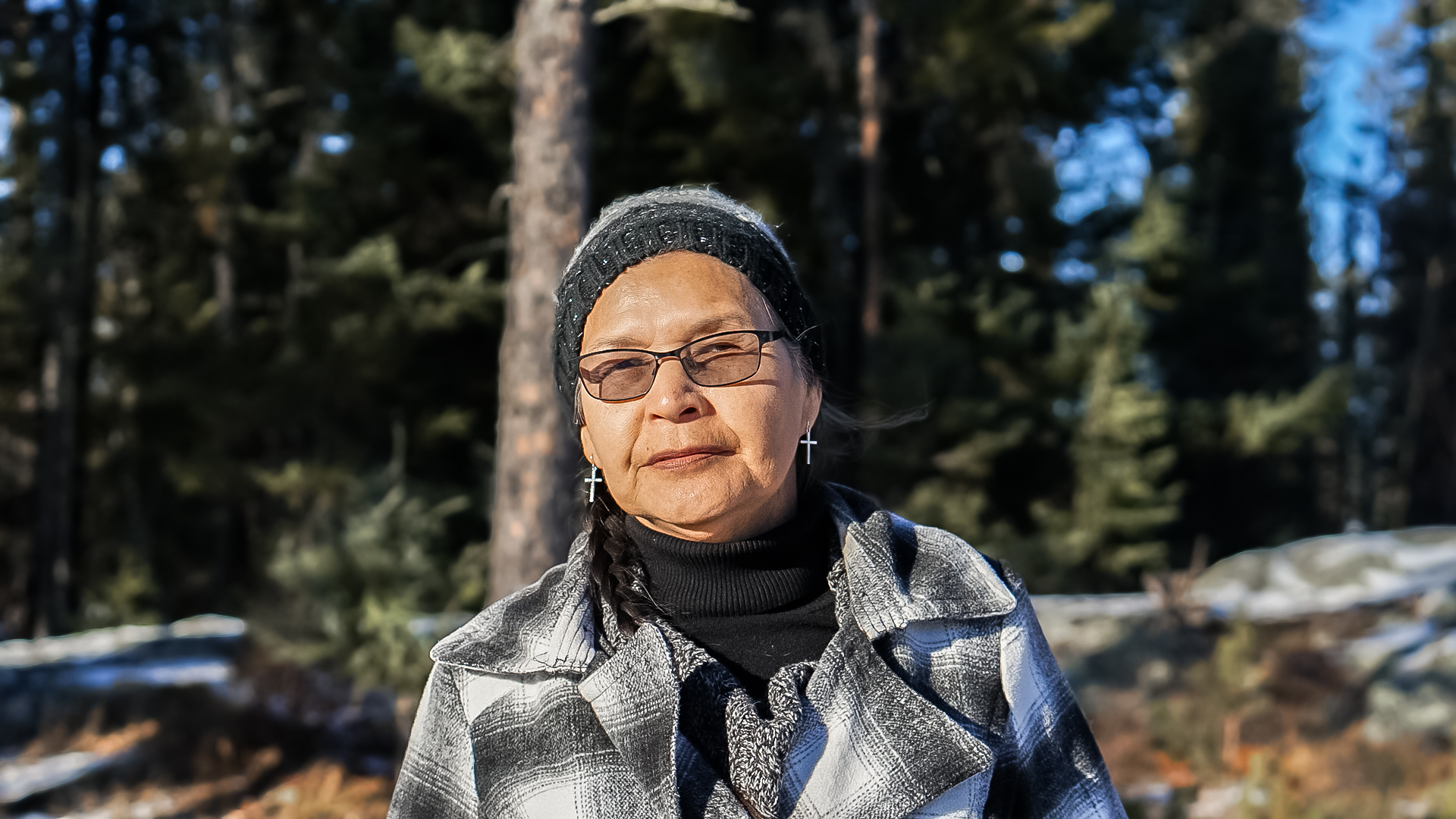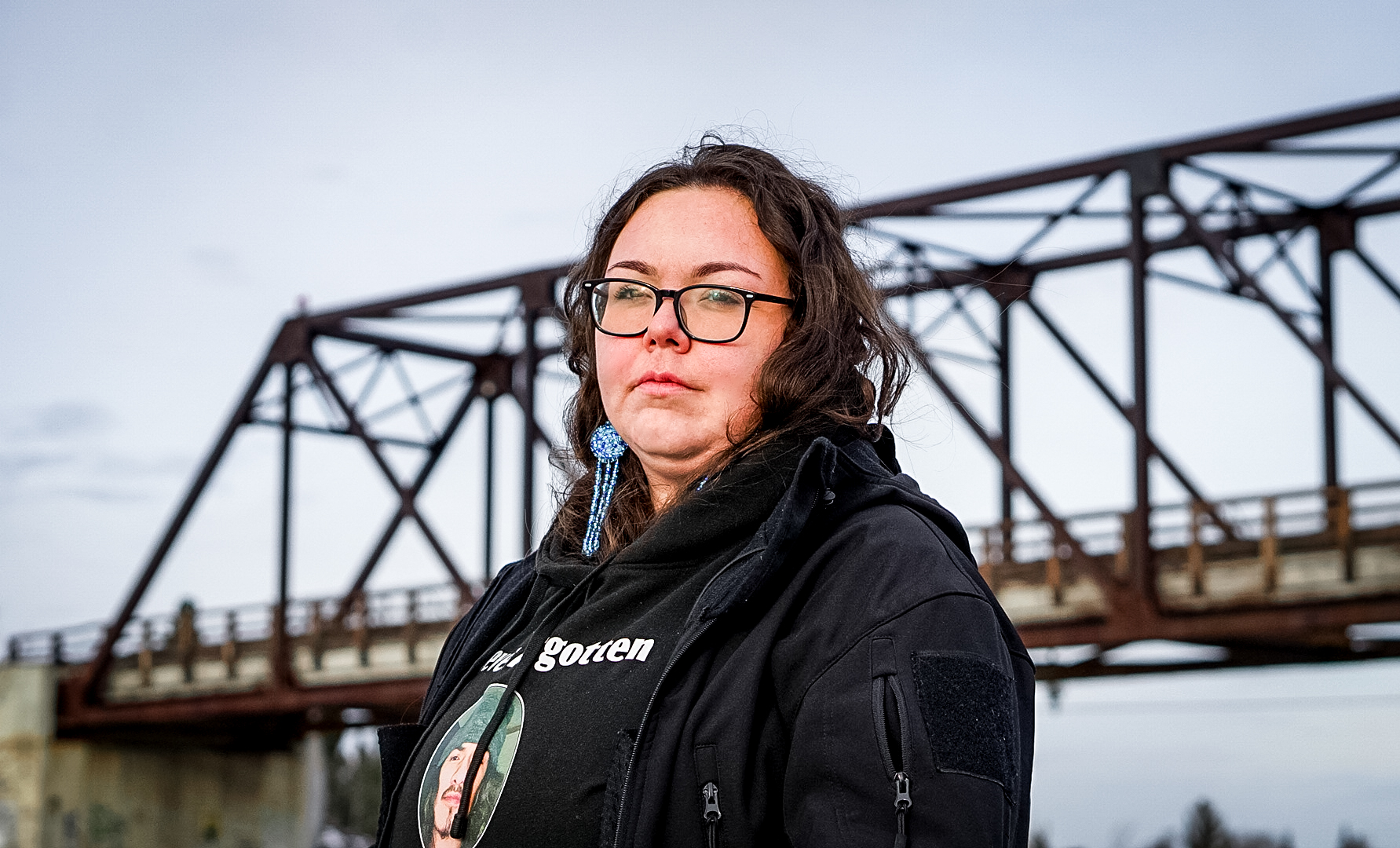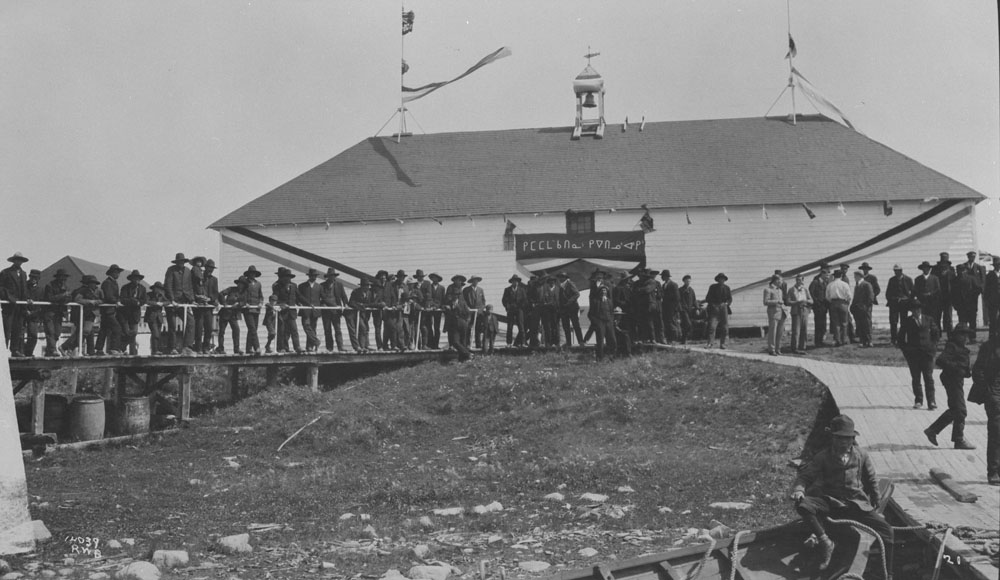Food
FOR PROFIT
Brittany Guyot & Tom Fennario | APTN Investigates
February 23, 2024
Brittany Guyot & Tom Fennario
APTN Investigates | February 23, 2024
In a joint investigation, Brittany Guyot from APTN Investigates teams up with Steven D’Souza from CBC’s The Fifth Estate for an inside look at the true costs of our food in 2024, and what this means for our collective food security.
Are federal subsidies really making food cheaper for northern communities?
Nora Jean Omand scours the local grocery store for the best price of packaged beef.
She’s spent most of her life in Norway House, Man., a remote Cree community eight hours north of Winnipeg.
The grandmother of 28 prides herself on carrying out the tradition of making a meal out of next to nothing.
Carrots, onions, beef and macaroni noodles – it’s a staple in Indigenous communities, but even meals like this are becoming increasingly difficult to afford.
“You have to economize,” she said. “I usually go to Flin Flon or Winnipeg, like wherever I can go, I get food from there.”

Omand says the nine-hour drive it takes to go there and back is worth every penny.
But when she can’t make the drive, she shops in town at the Northern.
“I’m an old age pensioner and that’s what I have to survive on and at times that’s all I have to feed [my family] with,” she said.
APTN Investigates reporters, Brittany Guyot and Tom Fennario, travelled to Norway House to hear what residents of the community have to say about the rising cost of food.
Omand isn’t the only one with questions.
“We have an all-weather road that comes all the way here and that’s what I don’t really understand why [grocery stores] would keep their prices so high,” she said.

Paige Miswagon worked as a paramedic for years in Norway House.
“I saw how low access to healthy food and the high prices of food in our local stores – I got to see how heavily that impacted the community,” said Miswagon.
The eye-opening experience led the 29-year-old to make a career change, focusing on growing healthy food in her community.
A converted shipping container called a “growcer” was delivered to the community and serves as a hydroponic farm.
“First Nations everywhere have low rates of health and that’s directly tied to diet,” she said. “And working with the Growcer directly combats that.”
While giving APTN a tour of her community, she stopped by the former Hudson’s Bay Company (HBC) trading post.
“All the boats would come through here, come through this river, stop at the docks and unload and that’s where it all went down,” she said.

She pointed to the wooden structure, it’s weathered and distressed but serves as a stark reminder of the past.
The North West Company was formed in 1779, beginning as a direct competitor to the HBC during the fur trade.
Eventually, the two companies merged and over time trading became retailing.
In 1989, investors bought out the northern retailing division of the HBC and named themselves the North West Company (NWC).
For many folks living north of the 50th parallel, the NWC has become a household name. The billion-dollar company has operations that stretch from Alaska to the Caribbean.
And the Northern store is just one of several operations owned by the grocery giant. But, the NWC doesn’t just sell groceries, its operations have taken hold of the financial and shipping sectors in the North.
APTN and CBC’s Fifth Estate teamed up to find out why grocery prices in the North have skyrocketed.

The federal government spends $134 million a year on a program designed to keep food costs down in the North, it’s called Nutrition North Canada (NNC).
However, according to health researcher and University of Toronto professor Tracey Galloway, food insecurity has only risen since the creation of the NNC program.
Food insecurity is determined by the accessibility of nutritious food within a community.
Statistics Canada reported in 2023 that Indigenous families are at the highest risk of being food insecure.
Galloway recently co-published a study in the Journal of Public Economics.
The study analyzed dozens of eligible communities between 2016 and 2019 and found that the subsidy was not being fully passed on to consumers to make groceries cheaper.
“The amount of subsidy that was being translated into lower [grocery] prices were 67 cents on the dollar,” said Galloway.
NNC requires northern retailers to pass along 100 per cent of the subsidy to reduce the cost of food. For communities with only one grocery store, the researchers found that the subsidy pass-through was even lower.
“If there was no competition, not another store in the community, the pass-through was 58 cents,” she said.
The NWC disputes those findings.
“The North West Company unequivocally passes along 100 per cent of all NNC subsidies in our pricing,” said a spokesperson for the northern retailer.
The head of the NNC program, Wayne Walsh said they are looking into the issue.
“If the auditors find that the retailers in question are not compliant, they will let us know and we will take corrective action,” said Walsh.
According to the government of Canada, the NWC has been compliant with the NNC guidelines.
“Food insecurity is a really complex issue that has a lot of different considerations and factors,” said Walsh.
He said NNC is committed to finding new solutions to food insecurity for northerners. In the interest of finding solutions, Beth Kotierk joined the Nutrition North Canada Advisory Board in 2021.
“I was hopeful, it felt like I could have changed something,” said Kotierk.
The Inuk lawyer said her time with the board was disheartening.
“When I would try to raise things, it would just kind of be steamrolled or just pushed aside, some kind of fluff answer would be given as to why we can’t have projects or have the subsidy look differently than it does today,” she said.
In December 2023, Kotierk submitted her resignation to the board. She said the subsidy could be more effective at addressing food insecurity if it were applied to harvesters rather than retailers.
The NWC also disputes those findings, saying in a statement that Galloway’s research was flawed and inaccurate.
Galloway said the data was gathered from publicly available documents and that if the NWC wants to provide more data, she is willing to analyze it. A separate study looked at the NNC subsidy pass-through and found that 91 cents of every dollar was passed on to consumers to reduce grocery costs.
Galloway said the discrepancy in findings was due to research methods.
“They were comparing the prices in communities to some baseline prices in the city of Ottawa,” she said. “We’re looking at prices in the same community and how they change when an increase in federal subsidy is given to the store.”
APTN reporters spoke with Alexyss Dodd, a former employee of the NWC.
“I was recruited as a financial administrative officer for the North Mart,” said Dodd, referring to a local grocery store owned by the NWC.
Dodd moved to Iqaluit, Nunavut to begin her new role.
“I noticed there was consistent price increases of almost double, sometimes triple of what the item originally was intended to be,” said Dodd.
The former employee said she attempted several times to discuss the price increases with senior management staff but felt her concerns were not heard.
“I took probably upwards of 500 photos over the time I was doing pricing.”

Dodd shared several photos with APTN and CBC that detail price increases.
Canned beans, baby formula and coffee were among the hundreds of photos documented.
The former NWC employee said one item in particular raised concerns for her.
“The price was set originally on Nov. 9, 2022, and on Dec. 31, 2022, the price increased almost six dollars, from $16.49 to $22.39,” she said, referring to a bottle of olive oil.
The NWC declined repeated requests for an interview with APTN and CBC.
In an emailed statement, spokesperson Darryl Martin said the price increase was due to the more expensive shipping option, air freight.
Dodd said she took the photos in an attempt to have more transparency during a time when many Canadians are experiencing steeper grocery bills.
The NWC says shipping costs are only part of what makes grocery prices expensive. Electricity, utilities and rent all factor into what a consumer pays at the counter.
The heads of major grocery stores were called to parliament to testify about the rising cost of food.
So how much did the big grocers make?
According to their adjusted net earnings, Empire’s earnings increased 3.6 per cent from the previous year. Metro’s adjusted net earnings increased 10.9 per cent. And Loblaw saw an increase of 11.7 per cent.
The NWC’s earnings were 26.1 per cent from the previous year, so why weren’t they called to testify at the parliamentary hearings?
Tracey Galloway was not surprised northern grocers were not called to testify.
“I think that just sort of replicates an old habit of not thinking about the North,” she said.
